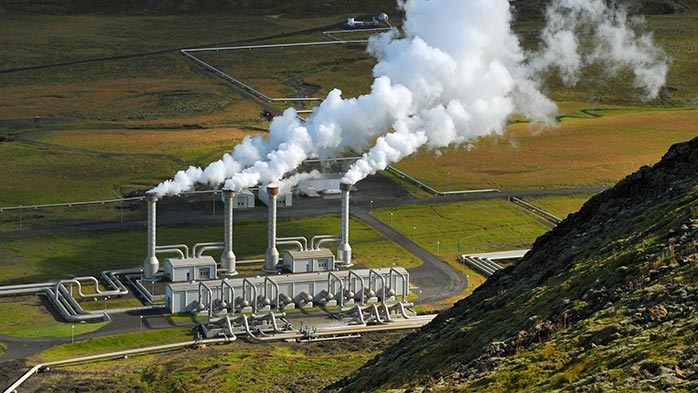Decarbonization

May 22, 2025
EGA makes its move on U.S. primary aluminum supply gap
Written by Greg Wittbecker
The Oklahoma smelter – Now the hard work starts
The aluminum market greeted the news of EGA’s planned 600,000 metric ton/year with great enthusiasm. Deservedly so. EGA has a sterling reputation for execution of big capital projects in smelting and refining. They are also an existing major player in the U.S. value-added products market, so this is not virgin territory for them commercially.
As the recent Aluminum Association White Paper on aluminum correctly stated (co-authored by AMU’s own – Greg Wittbecker), we need more primary aluminum to fuel the continued growth in demand here. Our deficit remains over 4 million tons, and this would make a decent “dent” in that deficit.
The news also comes at a time when Century’s similarly sized greenfield smelter project has not made much progress. That brings us to an old familiar theme, “where’s the power coming?”
The details of the deal are now being worked
Some of the key statements of fact:
We now have the benefit of seeing the actual Memorandum of Understanding (MOU) between EGA and the State of Oklahoma to look for clues on how this smelter gets built.
- The $4 billion investment will consist of 464 pots or reduction cells producing about 600,000 tons.
- 633 acres to be acquired from Tulsa-County Port Authority
- 900 to 1000 direct jobs
- A carbon anode plant
- A casthouse producing an array of value-added products such as billets, foundry alloys and sheet ingot.
- A logistics solution = e.g. port facility for transferring raw materials in by barge and metal out
- Feasibility studies will commence in 2026 and construction thereafter, with a target of having first hot metal by 4th Quarter 2029 or 1st Quarter 2030
- $545 million in Tax Incentive Financing (TIF). TIF is a tool used by municipalities to fund public and private projects by capturing increased property tax revenue generated by new developments such as the smelter, within a designated TIF district. The increased tax revenue is then used to finance infrastructure, redevelopment of land, and public services that create those gains. Initial allocation of financing proceeds was described as follows:
- 5.7% of the TIF would go to city, county and other taxing jurisdictions, district, estimated at $31 million plus $45 million specifically allocated to schools.
- 12.8% for community improvements- $25 million
- 16.3% for port infrastructure improvement- $89 million
- 49.5% for project development – $270 million
- $255 million in State incentives
- Permanent states sales tax exemptions on machinery and energy totaling $215 million.
- Property tax exemption for 5 years – $109 million
- Permanent exemption from annual inventory tax – $8 million
- State income tax offsets – $155 million.
- Quick action closing fund – $20 million.
What about the energy deal?
The MOU did not detail a prescription energy deal but did offer some tidbits of incentives to get the project to go. EGA will be negotiating with the Public Service Company of Oklahoma (PSO) for a special rate offer. This is a wholly owned subsidiary of AEP, American Electric Power. Here are some of the incentives that were detailed:
- $16 million bond credits
- A discount of 10% from standard large power and light rates (LPL) to include peak demand charges.
- A renewable hedge on fuel up to 40% for a portion of the rate fixed long term.
This last incentive bears further investigation. We interpret that as a partial hedge on natural gas costs that would roll up to a price per megawatt hour (MWh)
As we discussed last week, the economics of this site for EGA are driven by the availability of natural gas to provide base load power, supplemented by Oklahoma’s strong wind generation (number 3 in the US behind Texas and Iowa.
PSO derived 27% of its generation from wind in 2023 and state-wide, 45% of generation came from wind. Given EGA’s long-term commitment to renewables in the UAE, where they are adding solar generation to their portfolio, it’s reasonable to expect that wind will be a critical element of the power cost bundle. However, natural gas pricing and what that translates into for power is the linchpin.
We are just beginning our analysis of what gas pricing would translate into for prices per mWh. A big caveat in this analysis is the efficiency of the gas turbines being deployed.
Currently, future natural gas prices out into 2027-2028 are around $4.50 per MMBtu. A very rough cut on that price calculates to around $40-45 per MWh.
Tulsa and PSO are part of the vast Southwest Power Pool (SPP). Recent estimates place SPP’s gas generation at around 23 gigawatt (GW) of capacity. So, there is decent generation capacity.
PSO has filed for permission to acquire an existing 795 megawatt (MW) natural gas-combined cycle generation plant in Jenks OK. This is a 23-year-old plant that could be base load for EGA. Hearings are underway now for PSO’s request and it is contentious. An Administrative Law Judge has recommended against approval arguing that would raise retail power costs. PSO is still arguing for approval and the EGA project may sway state regulators to side with PSO given the publicity surrounding the smelter.
With the Jenks plant in its portfolio, PSO may be more aggressive in cutting a deal with EGA.
From EGA’s perspective, their leverage may be to “go it alone”, e.g. building their own gas-fired power plant in situ. The original announcement for the project had the acreage at 350 acres. The MOU indicates 633 acres. That could be a tip-off that EGA wants the optionality to erect their own power plant if negotiations don’t go well.
It’s early in the game, but the political winds seem to argue for PSO to cut a deal with EGA.
So, does $40-45 MWh power work for EGA. It is a lot higher than what EGA is used in on its home turf in the UAE but does not represent a “bad” price for the USA environment. Long-term prices on most U.S. regional grids remain elevated, ranging from $60-70 per MWh.
Stay tuned for the next chapter of this fascinating story.







